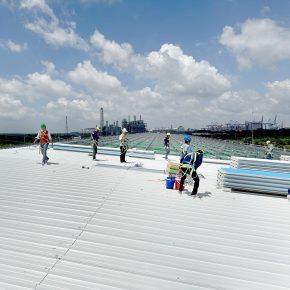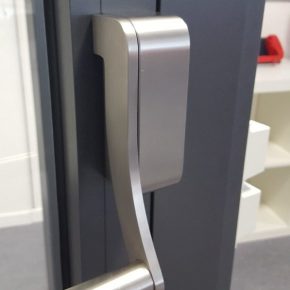
Construction companies lose revenue through corruption and fraud
The risk analysis agency Kroll recently revealed that 70% of companies worldwide were the victims of lost revenue caused by fraud. With the research conducted in the summer of 2013, the figures show an up-to-date snapshot of where the business world is at the moment as regards fraud and corruption.
Analysis agency Kroll revealed that 70% of companies worldwide were the victims of lost revenue
Of particular interest is what the report has to say about the construction industry. Marking it out as one of the industries most affected by corruption and fraud, the figures show a depressing 69% of construction companies were impacted by fraud in the past year. As well as the figures for those companies that suffered by losses from fraud and corruption, we can also see results of those companies which feel they are open to fraud of some form. Over 80% of construction companies felt they were vulnerable to theft of assets or stock and slightly over 75% thought they were vulnerable to vendor, supplier or procurement fraud.
Another report, concentrating on the construction industry in particular, allows a closer look at the issues affecting the industry in the UK. The Association of Certified Fraud Examiners’ (ACFE) report to the nations shows that for the UK construction industry, order manipulation and false representation are identified as being the most prevalent forms of fraud. Overall, contract rigging comes out globally as the most common type of fraud for construction. With a median global loss per company of $300,000 in the industry for 2012, a guard against fraud or corruption simply cannot be let slip regardless of the type of category.
The research from the ACFE also focuses on prevention of fraud and corruption. It shows that larger companies are more vigilant against fraud than smaller ones with 59.4% of companies of over 100 employees training their staff to spot fraud compared to only 18.5% of smaller enterprises. Whatever the reasons for this, the result is that smaller companies are now more vulnerable to fraud and corruption.
The Kroll research also addresses this issue, reporting that more than in any other industry, construction firms are looking to invest in due diligence (a major contributor to fraud prevention). However, this applies to only 55% of construction industry respondents to the research so, even though it is better than other industries, it is still low.
Globalisation of the construction industry and the trend towards using more partners and suppliers than before are seen as the major drivers of risk in construction today. Diversifying an aspect of a business, either geographically or by taking on new partners for projects will always carry risks.
With the growth in these drivers of risk comes a commensurate need to grow your fraud monitoring and detection systems.
A total of 69% of construction companies were impacted by fraud in the past year
The most effective method of fraud detection is from internal reporting or tip-offs from staff, so, whether a firm is a small operator or a global player, a culture of fraud awareness should be promoted. Employees of all levels should feel confident in challenging anything they find suspicious. There is no need for this to be an expensive exercise and can benefit firms of all sizes when introduced.
Using this as a foundation, training staff, particularly those who work in the finance and reporting side of the business, to spot common signs of fraud and corruption is a solid strategy. Changes in spending patterns, schedules and orders as well as excessive amounts of invoices with round values, and any series of repeated invoices with non-sequential numbers from any one particular vendor are all indicators
of fraudulent activity.
In the procurement function, wariness of a lack of control and/or competition in the bidding process as well as excessive revisions of costs from an initial bid price can all be markers of fraud.
Any one of these elements does not necessarily indicate a potential fraud, but they are common enough markers that a company or employee with an awareness of fraud should take them seriously. Tackling fraud from both inside and outside a company boils down to vigilance. With the construction industry in the UK experiencing a welcome change in fortunes after a period of decline, a similar increase in corruption attempts is expected to follow. With proper vigilance and the right company culture, the threat of loss can be limited and construction companies can benefit from proper, safe, growth.
Latest news

16th April 2024
Hamworthy: What to consider when choosing a heat pump?
At the heart of an efficient heat pump system lies an important element: the refrigerant – Jason Allen, Commercial Product Manager, Groupe Atlantic UK, ROI & NA. Hamworthy Heating is a Groupe Atlantic brand.
Posted in Articles, Building Industry News, Building Products & Structures, Building Services, Facility Management & Building Services, Heating Systems, Controls and Management, Heating, Ventilation and Air Conditioning - HVAC, Pipes & Fittings, Plumbing, Retrofit & Renovation, Sustainability & Energy Efficiency
15th April 2024
EJOT Colorfast chosen for Kingspan’s highly sustainable new Asian factory
More than 120,000 EJOT Colorfast self-drilling fasteners have helped Kingspan to create a thermally superior, visually-appealing building envelope for its first purpose-built manufacturing plant in South East Asia.
Posted in Articles, Building Industry News, Building Products & Structures, Building Systems, Case Studies, Posts, Restoration & Refurbishment, Retrofit & Renovation, Roofs, Sustainability & Energy Efficiency
15th April 2024
ASSA ABLOY helps new manufacturing plant achieve LEED Gold certification
Improving sustainability performance is becoming a higher priority for building developers, owners and users. One consequence is fast-growing demand for green building certifications — and therefore specification. Specialist input can make the difference between hitting and missing a project target, as ASSA ABLOY explains here…
Posted in Access Control & Door Entry Systems, Architectural Ironmongery, Articles, BIM, Infrastructure & CAD Software, Building Industry News, Building Products & Structures, Building Regulations & Accreditations, Building Services, Case Studies, Doors, Facility Management & Building Services, Information Technology, Retrofit & Renovation, Security and Fire Protection, Sustainability & Energy Efficiency
12th April 2024
Strand Hardware: D-Fine Makes a Splash for Seaside Safety
Strand Hardware’s D-Fine range is designed to withstand the harsh conditions prevalent in coastal environments. It is made from 316 stainless steel.
Posted in Access Control & Door Entry Systems, Architectural Ironmongery, Articles, Building Industry News, Building Products & Structures, Building Services, Doors, Facility Management & Building Services, Health & Safety, Innovations & New Products, Restoration & Refurbishment, Retrofit & Renovation, Security and Fire Protection
 Sign up:
Sign up: